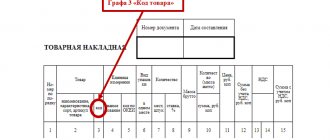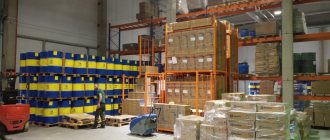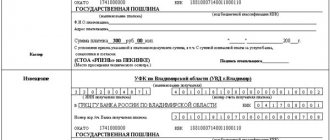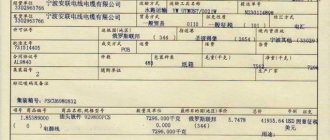According to Article 20 of the EAEU Customs Code, goods are subject to classification during customs declaration. It follows from this that the responsibility for determining the HS code at the level of all ten digits rests with the declarant (that is, the importer or exporter).
At the same time, customs authorities often do not agree with the code chosen by the declarant and make their own decision on classification. This is explained by the complexity of classification issues and the lack of a clear, comprehensive reference book that could provide for all cases of classification of existing goods in all their diversity.
In addition, it is important to take into account that the customs duty rate and the list of permits that must be submitted to the customs authority (certificates of conformity, licenses, etc.) depend on the classification of goods.
This is also one of the reasons for the frequent disagreement of customs with the declared code.
In case of the above disagreement, as a rule, additional customs duties are charged, and in some cases, a case is initiated for an administrative offense under Part 2 of Article 16.2 of the Code of Administrative Offenses of the Russian Federation “false declaration” (a fine in the amount of one-half to two times the amount of unpaid customs duties with possible confiscation goods).
To help you avoid the above-mentioned adverse consequences, we are ready to provide you with services for obtaining a preliminary classification decision in relation to the goods you import (export).
We can also offer you practical assistance in complex cases of product classification and provide consulting services.
Finally, if the customs authority has already classified your goods according to an unacceptable or unreasonable commodity item (code) of the EAEU Commodity Nomenclature for Foreign Economic Activity, we are ready to provide you with legal assistance in appealing this decision.
Basics of commodity nomenclature of foreign trade activities
- Concepts in the field of classification and coding of goods
- Methods for classifying goods
- Product coding
- Harmonized system of description and coding of goods - the international basis of the Commodity Nomenclature of Foreign Economic Activity
- Commodity nomenclature of foreign economic activity (TN FEA): purpose, scope of application, structure and content This is what the CN EU code looks like (HS Code of Europe)
- Coding of goods in the Commodity Nomenclature of Foreign Economic Activity of Russia is carried out using a sequential method
- Historical scheme of the HS code
Concepts in the field of classification and coding of goods
Classification (from the Latin classic - rank, facere - to lay out) is the sequential distribution of a set of objects into certain subsets. The resulting system is called classification.
Classification of goods allows:
- identify general characteristics of product quality;
- study the structure of the product range, organize rational accounting of goods;
- correctly carry out economic transactions with goods (calculation of duties, etc.);
- maintain automated accounting of goods.
The object of classification is an element of the set being classified. A classification attribute is a property or characteristic of an object by which classification is made. One of the most important issues of classification is the correct choice of characteristic by which a particular product will be assigned to a certain group.
The main features of the classification of goods are:
- unity of technological production processes;
- direction or purpose of use of the goods;
- physicochemical characteristics
Coding of goods is the formation and assignment of a code to a classification group of goods and/or an object of classification. A product code is a sign or a set of signs used to designate a classification group and/or classification object. The purpose of coding is to systematize objects by identifying them, ranking them and assigning a symbol (code) by which any object can be found and recognized among many others.
A goods classifier is a systematic list of classified objects, which allows you to find a place for each object and then assign it a certain symbol (code).
Product nomenclature is a system of names and terms used in any branch of science, technology, or practical activity. Product nomenclature is a classifier of goods.
Top
What forms of customs declaration exist?
At the moment, both standard written and electronic forms of goods declaration are allowed. However, when providing TD in writing on paper, you should provide an electronic copy of it. In general, the following forms of customs declaration are distinguished:
- provision of information orally, applies to individuals, passenger declaration can take place in this format, concerns things that are not transported for commercial purposes;
- submission of information in electronic format, informing customs authorities regarding cargo that will be transported across the border is carried out via electronic means of communication;
- a written statement applies to goods and cargo in luggage that are included in the list of mandatory declarations.
Customs declaration forms
The written declaration is drawn up on a special form, it is issued directly at the customs point, it can also be downloaded, printed and filled out. The electronic one is certified with a digital signature and is verified no later than three hours after the application is accepted.
Methods for classifying goods
There are three classification methods: hierarchical, facet and mixed. The hierarchical method involves the sequential division of a set of objects into subordinate classification groups (subsets). Below is a diagram of the hierarchical method for classifying grape wines.
In hierarchical classification, the distribution of objects is made from a more general characteristic to a less general one, and each subsequent link specifies the characteristic of a higher level. The main advantage of hierarchical classification is its large information capacity, ease and familiarity of use. The disadvantage is the weak flexibility of the structure and the pre-established order of distribution stages, which does not allow the introduction of new objects and characteristics in the absence of reserve capacity. The number of features and steps determines the depth of classification. The depth of classification can theoretically be infinite, but in practice such classification is too complex, so if you need to increase the number of features, then use the facet classification method.
The facet classification method is a parallel division of many objects into independent classification groups (facets). The peculiarity of the facet classification is that the individual facets do not depend on and are not subordinate to each other; each facet, belonging to the same set, characterizes only one of the sides of this set. Classification groupings in facet classification are formed from objects taken from the corresponding facets. The advantage of facet classification is the flexibility of the structure, since changes in any one of the facets do not affect the others. The disadvantage of facet classification is the insufficient use of capacity, the unfamiliarity of application, as well as the difficulty of using this method for manual information processing. Each classification method has its own disadvantages and advantages, so in some cases both methods are used at once ( mixed method ).
Top
Advantages of electronic declaration
The practice of using electronic declaration has identified numerous advantages of this method of information exchange:
- You can submit a customs declaration electronically from anywhere in Russia;
- The time spent by cargo at the inspection point has been significantly reduced (down to one hour);
- The customs clearance process has become simple, transparent and understandable;
- All stages of customs clearance can be tracked online from your computer;
- Savings on costs previously spent on travel of a foreign trade participant to the place of cargo inspection;
- Savings on customs clearance fees (for electronic declaration, the fees are calculated at 75% of the usually applied rates);
- Cryptographic protection ensures the safety and reliability of the declaration process;
- Independence from customs opening hours (the declaration can be submitted electronically at any convenient time);
- Reducing paper document flow by creating electronic archives of long-term documentation;
- Efficiency in correcting errors and exchanging missing documents through correspondence communication with a customs specialist.
For customs, the introduction of electronic document management made it possible to optimize human resources, solve problems with false declarations and corruption, and also speed up the receipt of customs payments to the budget.
Most services that work with the electronic declaration format require the use of special software and digital signature. It is necessary to ensure their availability before customs clearance.
Product coding
Coding of goods is the formation and assignment of a code to a classification group and/or classification object. A code is a sign or a set of signs used to designate a classification group and/or classification object. The purpose of coding is to systematize objects by identifying them, ranking them and assigning a symbol (code) by which any object can be found and recognized among many others. There are four encoding methods:
- ordinal;
- serial-ordinal;
- parallel;
- consistent.
The ordinal method is that the formation and assignment of a code is carried out from numbers in the natural series. The serial-ordinal method consists in the formation and assignment of a code from numbers of the natural series with the assignment of individual series and ranges of these numbers to objects of classification with certain characteristics. The sequential method involves the formation and assignment of a code to a classification group and/or classification object using codes of sequentially located subordinate groupings obtained using the hierarchical classification method. The parallel method is that the formation and assignment of a code to a classification group and/or classification object occurs using codes of independent groupings obtained using the facet classification method. The set of rules and methods for coding classification groupings and classification objects of a given set is called a coding system.
Top
Harmonized system of description and coding of goods - the international basis of the Commodity Nomenclature of Foreign Economic Activity
The Harmonized Commodity Description and Coding System was developed under the auspices of the Customs Cooperation Council. HS is a detailed and unified foreign trade classifier that ensures the collection, comparability and analysis of international trade statistics. The harmonized system was developed on the basis of international, regional and national classification systems, nomenclatures and tariffs in force in trade. The original intention of the Council was to bring the HS Convention into force on 1 January 1985, but various administrative delays and negotiations led to a change in the planned date, and a new date for the implementation of the Convention was set at 1 January 1988. Currently, the Convention is acceded to already more than 100 countries, customs and economic unions. The USSR entered the Convention on August 12, 1988, by Resolution of the Council of Ministers of the USSR No. 1004 “On the introduction of the Harmonized System for Description and Coding of Goods in the USSR.”
The International Convention on the Harmonized System of Description and Coding of Goods consists of 20 articles. The Preamble of the Convention explains the reasons that prompted the creation of this Convention, including:
- promoting international trade;
- simplifying the collection, comparison and analysis of statistical data;
- extremely low granularity of classifications to meet the requirements of customs authorities, as well as the requirements for statistics from governments and trade circles;
- maintaining the relationship between GS and SMTC, etc.
Article 1 sets out the main definitions used in the Convention, including:
- The Harmonized System for Description and Coding of Goods is a nomenclature that includes product items, subheadings and related digital codes, notes to sections, groups and subheadings, as well as basic classification rules for interpreting the Harmonized System;
- nomenclature of customs tariffs - nomenclature developed in accordance with the legislation of the Contracting Party for the collection of customs duties when importing goods;
- statistical nomenclatures – product nomenclatures developed by a Contracting Party to collect statistical data on the export and import of goods;
- unified customs-statistical nomenclature - a nomenclature that combines the nomenclature of customs tariffs and statistical nomenclature, which, according to the legislation, the Contracting Party requires to be used when declaring goods upon import, etc.
The SG is overseen and led by the Harmonized System Committee, which consists of representatives of each Contracting Party. The HS Committee performs the following functions:
- proposes amendments to the Convention;
- draws up explanations, principles of classification and other recommendations related to the interpretation of the HS;
- develops recommendations for uniform interpretation and application of the HS;
- collates and disseminates information related to the use of HS;
- provides information and recommendations on all issues related to the classification of goods in the HS, etc.
The overall management of the Convention is carried out by the Customs Cooperation Council; it also considers proposals for amendments to the Convention developed by the HS Committee and recommends them to the Contracting Parties.
The following may become Contracting Parties to the Convention: member states of the Customs Cooperation Council; customs or economic unions; any State to which the Secretary-General extends an invitation as directed by the Council. The Contracting Parties are obliged:
- use all commodity items and subheadings of the HS, as well as the digital codes related to them, without any additions or changes;
- apply the basic rules of classification, as well as all notes to sections, groups and subheadings and not change the content of sections, groups, commodity items and subheadings of the HS;
- comply with the coding procedure adopted in the Harmonized System;
- publish your statistics according to the six-digit HS code.
Contracting Parties are permitted to create subdivisions in their customs tariff nomenclature or statistical nomenclature to classify goods into more characters than in the HS, provided that these subdivisions are added and coded beyond the six-digit numeric code. In accordance with the Convention, the Contracting Parties do not undertake any obligations regarding customs duty rates. The Convention is of unlimited duration. However, any Contracting Party may refuse it, and the denunciation shall take effect one year after the notification of denunciation is received by the Secretary-General, unless a later date is specified therein.
HS is a nomenclature containing product items, subitems and related digital codes, notes to sections, groups and subpositions, as well as basic classification rules for interpreting HS. Thus, the HS includes the following elements:
- Basic rules of interpretation;
- Notes to sections, groups, positions, subpositions;
- Nomenclature of HS (NGS).
Since the Basic Rules and Notes form an integral part of the HS, they have the same legal force as the nomenclature part itself. The HS nomenclature consists of 21 sections, 99 groups (96 active groups and 3 reserve ones). When constructing the NGS, a mainly hierarchical classification method was used, although some positions were built on the facet method, and coding was carried out using a sequential method.
The basis for the classification of goods in all sections is a combination of various characteristics, the main of which are:
- origin;
- functional purpose;
- chemical composition;
- the type of material from which the product is made.
In the Harmonized System, Roman numerals are used to designate sections and subgroups, and Arabic numerals are used to designate groups, headings and subheadings. A six-digit code is used to designate a product in the NHS.
| X | X | X | X | X | X |
| GROUP | |||||
| PRODUCT POSITION | |||||
| SUBPOSITION | |||||
When classifying goods, notes and exceptions to sections, groups, positions, and subpositions are of great importance. They help to establish the correct product code. The nomenclature is designed in such a way that it includes all goods in trade.
Top
Types of customs declaration of goods
One of the main conditions for successfully passing control at customs is the choice of the correct type of declaration, its correct execution and completion, and the provision of reliable information about the cargo, which is why it is very important that the procedure is carried out by someone who is well acquainted with all its rules and nuances.
Types of customs declaration of goods
Declaration of goods involves the preparation of different types of customs declarations. Based on the nature of the procedure, it is classified as follows:
- incomplete declaration, in which information is submitted partially, is used for import and export in situations where it is not possible to declare the full amount of information about the transported cargo for reasons that do not depend on the declarant;
- complete, executed by legal entities conducting foreign economic activity;
- temporary declaration applies to goods for export of domestic origin in cases where there is not a full amount of information for calculating customs duties;
- preliminary, for foreign goods, is issued before they are imported or before the end of transit.
In addition to this classification, it is also applied by type of information submission and method of registration, according to which there are the following types of customs declarations:
- for goods, cargo TD, is issued in cases where cargo is transported for commercial purposes, it is issued by legal entities and individual entrepreneurs, submitted in electronic format;
- transit, fill out and submit either on paper or in electronic format;
- passenger, used by individuals to register goods intended for personal use;
- vehicles, submitted to TsAT in writing on a paper or electronic application, issued under the selected customs regime.
Requirements for registration and submission of declarations are regulated by a decision of the CU Commission. At the same time, the information entered into the TD, in particular the codes of goods according to the Commodity Nomenclature of Foreign Economic Activity, may vary depending on the type of declaration in accordance with Articles 181 and 182 of the Customs Code of the Customs Union. Knowing such nuances is far from being within the power of every entrepreneur, but if they are not taken into account, then it is easy to fill out documents incorrectly, as a result of which you will encounter bureaucratic problems, delays at the border, and so on. It is for this reason that the services of an intermediary, in particular a customs agent, are the best option.










